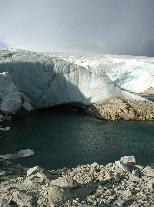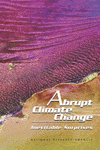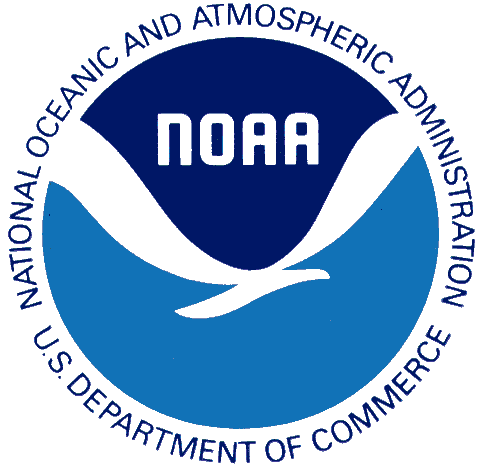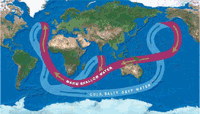 |
|
LAMONT-DOHERTY EARTH OBSERVATORY THE EARTH INSTITUTE AT COLUMBIA UNIVERSITY |
||
| Abrupt Climate Change | ||
| LDEO | ||
| Home | ||
| Divisions | ||
| LDEO Search | ||
| Abrupt CC | ||
| Home | ||
| Q&A | ||
| Contacts | ||
| Research | ||
| Links |
|
home
Modern Observations:
Changes of global climate in the past seem to have always involved the large-scale ocean
circulation either as an active element, amplifier, or global communicator of climate
change. The oceans transport large amounts of heat from the tropics to higher
latitudes and between basins. Some of this heat transport is due to the horizontal wind
driven circulation. However, most of the oceanic heat transport is due to the density-driven,
thermohaline circulation.
Modern climate/ocean observations are needed to describe the present state and serve as
initial conditions for model based prediction of the future evolution of the system.
Presently a number of international planning efforts are underway within the GCOS/GOOS
and CLIVAR framework to design a cost-effective, integrative global
ocean observing system.
At Lamont we concentrate on several key locations:
In the South, around the Antarctic continent, observations are more sparse than in the north
and time series hardly exist. In addition to logistical issues sea ice and the existence of
several geographically widely separated deep-water formation regions poses a real challenge
to any observational program. However, the Weddell gyre offers a unique setting for
monitoring one of the major, if not the single most important, sources of Southern Ocean
deep water in that it has a well developed gyre circulation. The western part of the gyre
collects newly formed deep and bottom waters and advects them via a western boundary
current northward along the Antarctic Peninsula towards the South Orkney plateau. Since
1999 we maintain a deep ocean time series station to observe the Weddell Sea outflow,
see the CORC-ARCHES
Southern Ocean. This project is part of the Climate Observations System of the
Office of Climate Observation .
In the North, long-term observations in the center of the Labrador and Greenland
Seas were started during the era of weather ships (1950-1975) and are now obtained by an
internationally coordinated program with participation from several European countries,
Canada and the US (ASOF and CLIVAR programs). In particular, efforts to measure the flow
through Denmark Strait are the observational cornerstones to document the current state
of dense water formation and density driven ocean overturning within the Atlantic sector.
These efforts have been supported by CORC-ARCHES from its very beginning through partial
funding of Dickson's current meter arrays.
Research Highlights:
|
|
|

NGDC |
Modeling Observations Paleoclimate |

NAS Report on Abrupt Climate Change |

LDEO CORC/ARCHES Project |

The trigger for the Younger Dryas |

Cultural responses to climate change |

Solar influence on climate change |
Maintained by: Naomi Naik, Lamont-Doherty Earth Observatory of Columbia University
LDEO home | search | webmaster | site map | terms-of-use | support LDEO
Copyright © 2003 by The Trustees of Columbia University in the City of New York, Lamont-Doherty Earth Observatory.
All rights reserved.